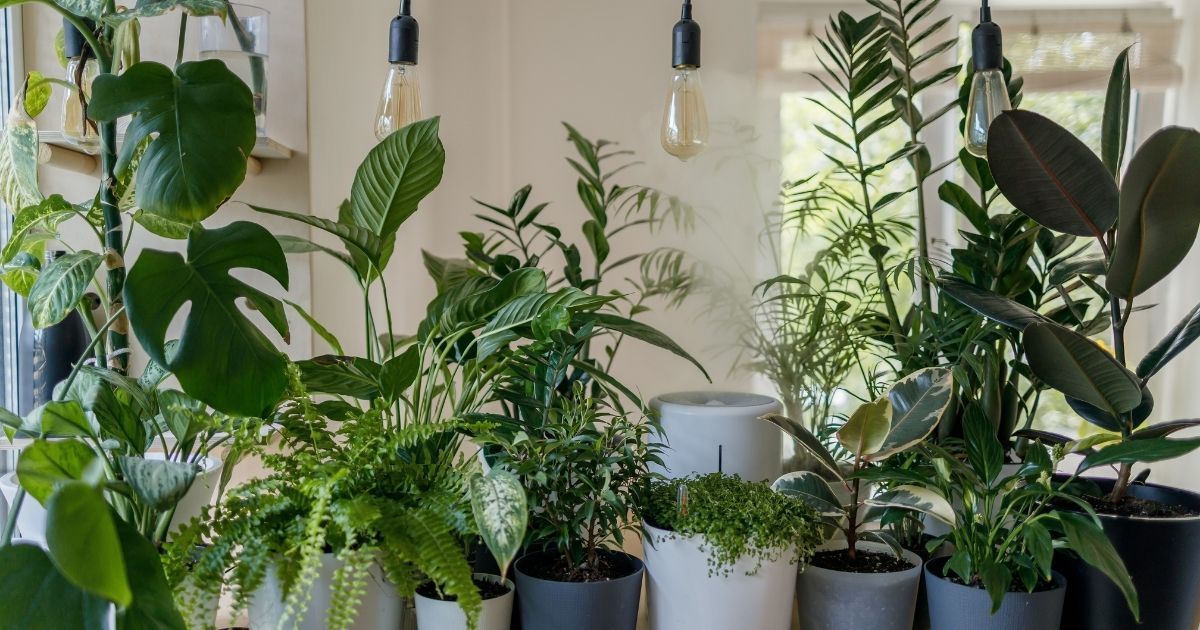16 NASA APPROVED PLANTS TO IMPROVE AIR QUALITY

The presence of houseplants can add a calming and peaceful energy to your home, and certain types can also filter the air that you breathe. In 1989 The National Aeronautics and Space Administration (NASA) conducted a study on indoor air pollution and found 16 indoor plants can purify the air of pollutants and harmful chemicals, providing you with cleaner air to breathe. The substances that were studied include; ammonia, benzene, formaldehyde, trichloroethylene, toluene, and xylene.
When these chemicals are present in your home, they can cause various symptoms. Fortunately, these plants that you can keep in your home filter out these chemicals. Here are the 16 NASA-approved plants to improve air quality in your home.
The 16 NASA Approved Plants
1. Peace Lily
Peace lilies are highly effective at filtering out each pollutant in NASA’s study. While they remove potential toxins from the air, keep them away from your pets. If animals eat them, it can cause gastrointestinal issues. Peace Lilies love low-light environments, but if you want them to produce more flowers, place them in a sunnier part of your house.
2. Bamboo Palm
A bamboo palm is a unique plant that’s non-toxic for pets and can filter out formaldehyde, toluene, and xylene from the air. It loves low light conditions and only requires water when the top of the soil feels dry to the touch.
3. Weeping Fig
Weeping figs love bright lights and lots of water (but be careful not to over-water them). Sometimes they’re braided while they grow, which gives them an interesting appearance. They filter formaldehyde, toluene, and xylene out of the air but are toxic to pets, so it’s best to keep this plant on an elevated shelf.
4. English Ivy
English Ivy is a beautiful plant, whether it’s hanging or potted, and it will grow as high as you let it. It filters out formaldehyde, xylene, benzene, trichloroethylene, and toluene in the air, effectively removing airborne toxins. However, pets should be kept away from it.
5. Moth Orchid
Moth orchids are non-toxic for pets, filter out toluene and xylene from the air, and are non-toxic to pets. They like water, but you have to let them dry out between waterings, and they love indirect sunlight.
6. Barberton Daisy
Barberton daisies require a bit more care than some of the other houseplants. They need to have their soil moist at all times and require lots of direct sunlight. They filter out benzene, trichloroethylene, and formaldehyde.
7. Lilyturf
Lilyturf needs lots of moist soil before they’ll be able to tolerate direct sunlight. They take extra care with filtering out ammonia, toluene, xylene, and formaldehyde from the air and are non-toxic to pets.
8. Spider Plant
Spider plants make excellent hanging plants or potted plants. They have long, pointed leaves and small, white flowers. They filter xylene, toluene, and formaldehyde from the air and need partial sun and consistent moisture.
9. Dracaena
Dracaena has long, striped leaves and can grow up to 10-15 feet high if properly managed. It’s relatively easy to take care of, as long as you don’t over-water it. They like moderate-to-bright light and can filter out benzene, formaldehyde, xylene, toluene, and trichloroethylene but are toxic to pets.
10. Broadleaf Lady Palm
A broadleaf lady plan needs moist soil all year round, but you have to make sure you don’t overwater it and let it get soggy. Don’t worry about your pets because this plant is non-toxic, so it won’t put your animals in any danger.
11. Devil’s Ivy
Devil’s ivy filters out benzene, formaldehyde, toluene, and xylene, and it is toxic to pets. It likes moist soil and indirect sunlight to stay healthy and be able to filter out as many harmful chemicals as possible.
12. Flamingo Lily
The flamingo is a beautiful plant that loves bright, indirect sunlight and thorough waterings. It filters out xylene, toluene, formaldehyde, and ammonia from the air.
13. Chinese Evergreen
Chinese evergreen is a super low-maintenance plant and would be a perfect starter plant for those who are inexperienced in caring for plants. It can tolerate low light, dry soil, and air. It gets rid of benzene and formaldehyde from the air.
14. Florist’s Chrysanthemum
A florist chrysanthemum requires bright light and loves to show off its bloom, as long as they don’t have artificial light at night. They filter benzene, xylene, formaldehyde, toluene, ammonia, and trichloroethylene from the air.
15. Variegated Snake Plant
A variegated snake plant is a succulent with long, pointed leaves, which are usually all green but may have yellow edges. They filter out benzene, trichloroethylene, and formaldehyde, and are toxic to pets. To avoid rotting, water sparingly.
16. Kimberley Queen Fern
The Kimberley queen fern is a non-toxic plant that filters xylene, toluene, and formaldehyde. It loves bright, indirect sunlight, and may change color to a pale green when it gets too thirsty.
Takeaway
In having these plants in your home, you have a simple way to make your space safer and healthier for you and your friends and family. They can help eliminate toxic chemicals that can irritate your respiratory system, and make you ill. You’re making the right choice by getting one of these NASA-approved plants to improve air quality.





